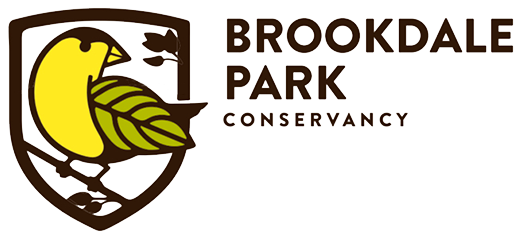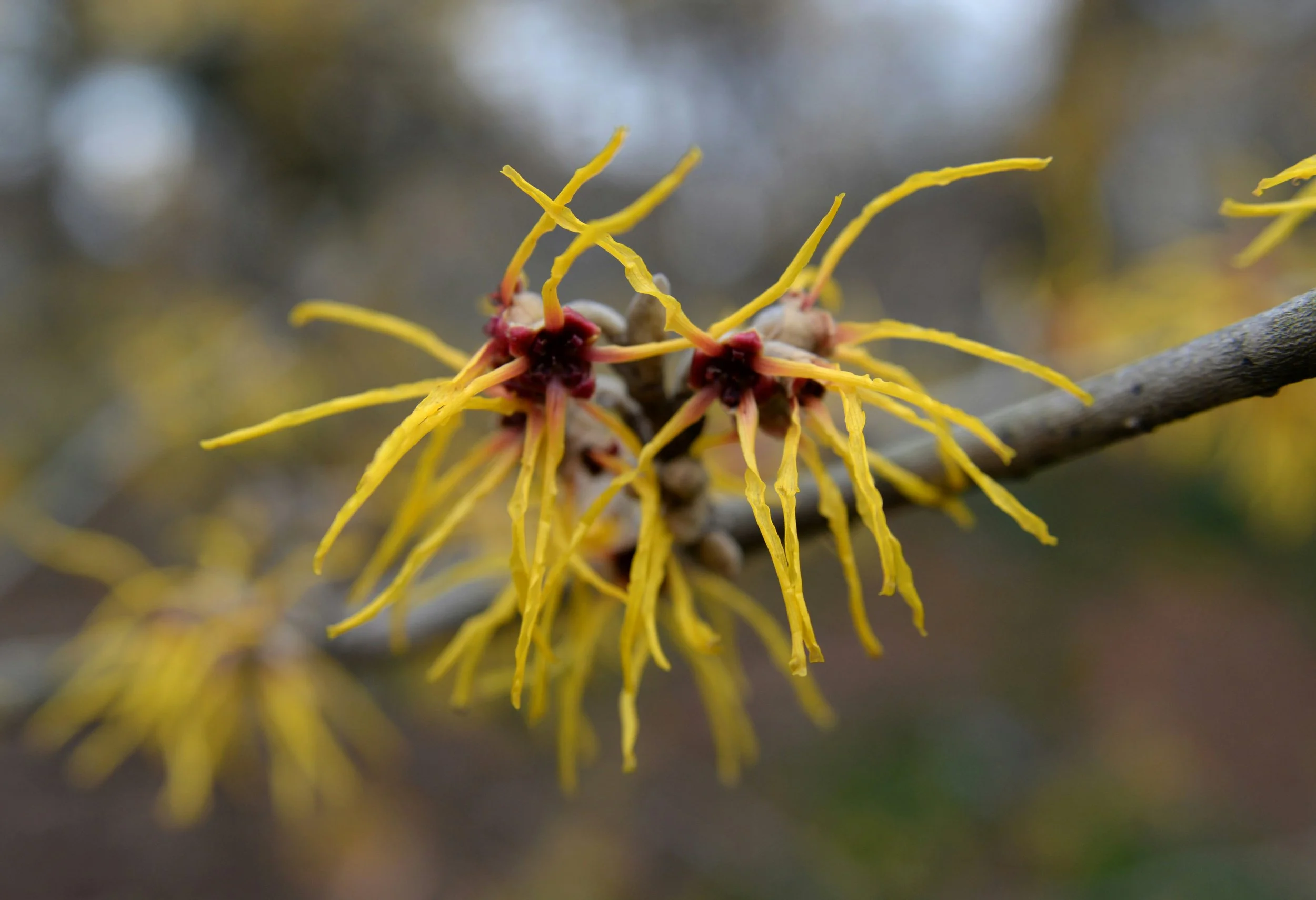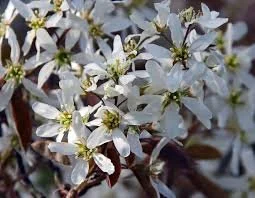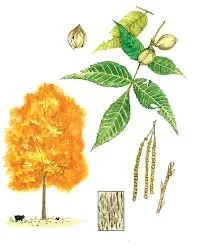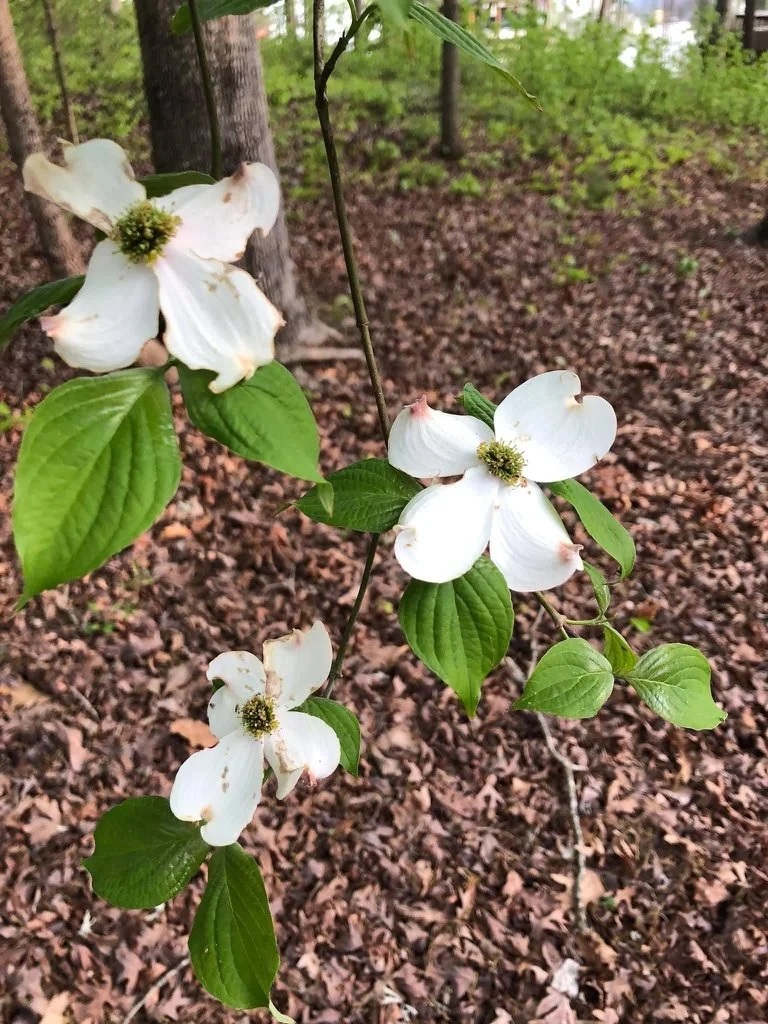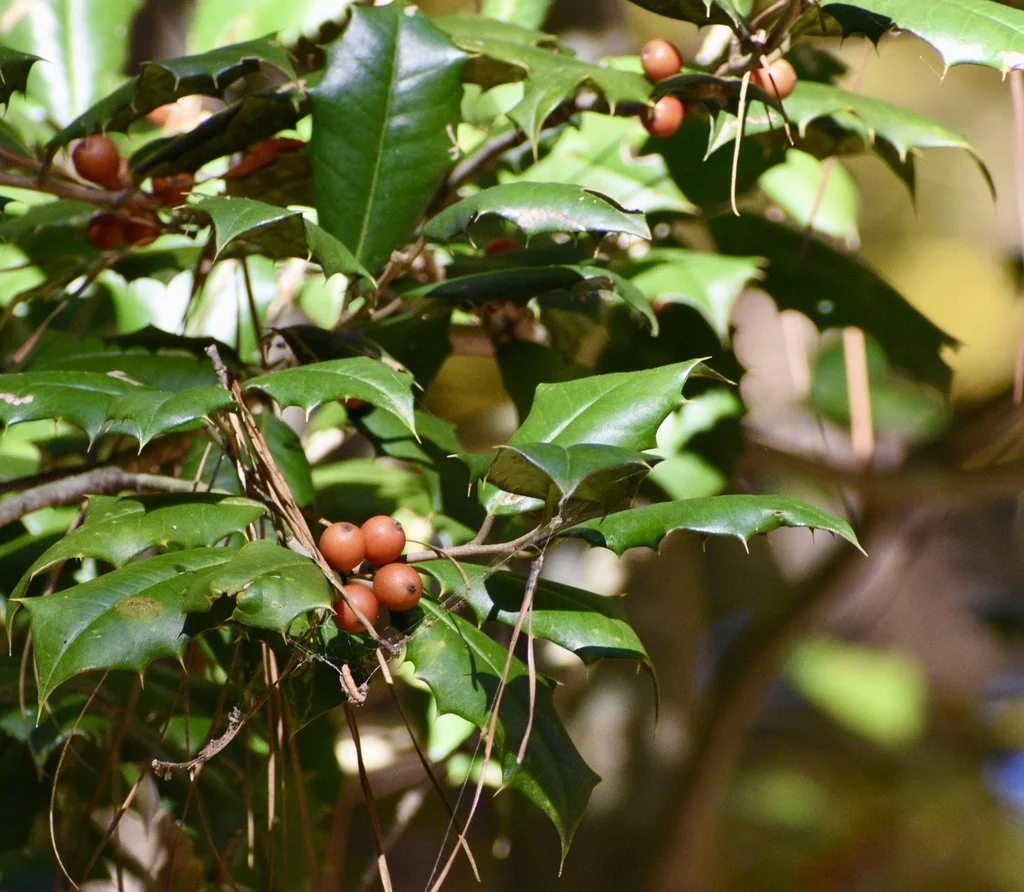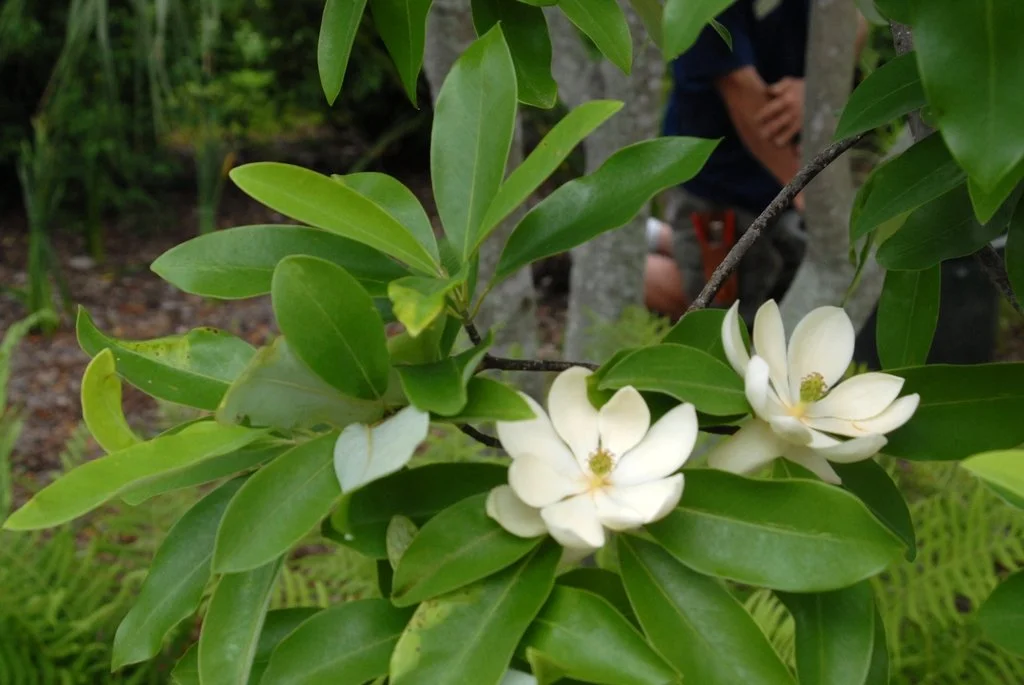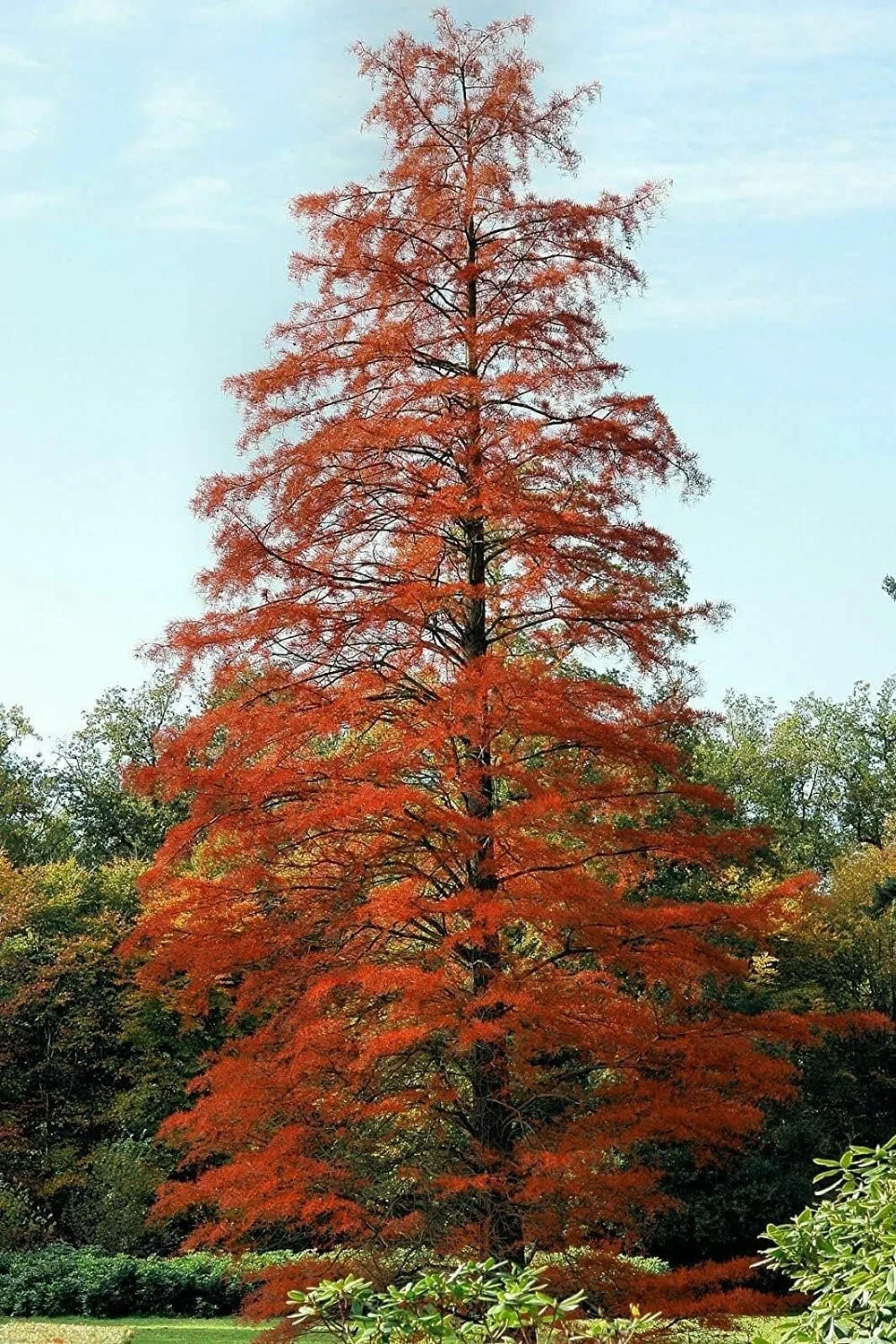Canopy tree replenishment program
Northern Red Oak
Quercus rubra
New Jersey’s state tree, red oaks have straight trunks clear of branches leading to a rounded crown and a canopy that is usually 3/4 as wide as the height. Its leaves turn crimson, golden orange and russet in the fall. Its wood outsells all other hardwoods and is used for multiple purposes. Hosts: over 500 species of butterflies, larval host to Grey Hairstreak Attracts: birds, small mammals and deer Growth: 75-100’h, moist to dry well drained loamy soil, shade tolerant Location: Next to circuit drive as you enter/leave via Bellevue, in the field near the bandstand
Scarlet Oak
Quercus Coccinea
Scarlet oaks are known for their brilliantly colored fall foliage. The branches are thick and ascending; twigs are are smooth and reddish brown. It forms a rounded crown that is somewhat pyramidal. The bark is very thin with fine fissures and scaly ridges. Plant it where there is sufficient space for it to grow upward and spread. Hosts: over 500 species of butterflies Attracts: birds, small mammals and deer Growth: 75’h, dry well drained soil, full sun Location: Next to circuit drive as you enter/leave via Bellevue
Pin Oak
Quercus palustris
These oaks are easy to identify by a pyramidal shape, with a tall straight trunk and slender branches which angle downward on the lower third of the tree. It has a graceful slender appearance. They are named pin oaks because of their very slender angular pin-like twigs. Glossy dark green leaves become deep red in the fall. In my view, in the winter its architecture is a stand out. Hosts: over 500 species of butterflies, larval host to Grey Hairstreak Attracts: birds, butterflies, hummingbirds Growth: 60-70’ h, heavy, poorly drained soils, sun Location: Next to circuit drive as you enter/leave via Bellevue
Swamp White Oak
Quercus bicolor
Swamp White Oak Quercus bicolor
Swamp White Oaks are natives and have attractive peeling bark which is especially apparent on young trees. The leaves are dark green on top with a silvery underside, and the acorns are distinguished by their long stalks. Every 3 to 5 years they produce large “mast” crops of acorns, this reduces seed predation and improves reproduction. This is a “keystone tree” as it supports many types of wildlife from insects to butterflies to birds and mammals.
Hosts: over 500 different species of butterflies/moths
Growth: 50-60’ h, moist to wet acidic soil, adapts to dry site
Location: Next to Circuit Dr between triangle and dog park, on circuit drive heading to leave to Watchung
Willow Oak
Quercus phellow
Willow Oak Quercus phellos
A popular landscape tree this has a fast growing nature, balanced round form and fine texture. It is tolerant of pollution, transplants well and adapts to most soil conditions. Like most oaks, it is also a high value tree for wildlife supporting birds, mammals and butterflies. The smooth edged narrow leaves are hairy on the bottom and golden in the fall and the bark gets dark grey and furrowed as it ages. Acorns are eaten by woodpeckers, songbirds, ducks, small mammals, wild turkeys, deer and bears; they are edible for humans only if boiled. Hosts: Imperial moth, butterflies - banded hairstreak, Edward’s hairstreak, gray hairstreak, white hairstreak, Horace’s duskywing, Juvenalis dustywing Attracts: birds, mammals and butterflies Growth: 40-75’ tall, 25-50’ wide, most soils, full sun/part shade Location: Upper Circuit drive, between beeches and yellowwoods, and opposite dog park entrance
Yellowwood
Cledratis Kenukea
Yellowwood Cledratis Kenukea
This native tree, part of the pea family produces fragrant flowers in June followed by seedpods that resemble pea pods. Yellowwoods provide nesting sites for songbirds as well as high quality nectar and pollen that attracts bees/pollinators. The wood of this tree is indeed yellow and the root bark was used in the past to produce yellow dye.
Attracts: bees and other pollinators
Growth: 30-50’ h, moist soil, protect from wind
Location: Between Pollinator Garden and Band Stand
Princeton Elm
Ulmus americana ‘Princeton’
Princeton Elm Ulmus americana ‘Princeton'
This is a native rough barked tree with small flowers in the spring and winged seeds that mature in April/May as the leaves reach full size. The leaves are 6” long, elliptical, dark green with toothy edges, and turn yellow in the fall. This graceful vase-shaped tree was widely used as a street tree until the population was decimated by Dutch Elm disease. The Princeton Elm variety was developed in 1922 and shows excellent resistance to the disease.
Hosts: over 200 different butterflies/moths
Growth: 60-80’ h, wet, dry or city condition tolerant
Location: Next to Circuit Dr between triangle and dog park
Yellow Birch
Betula alleghaniensis
Yellow Birch. Betula alleghaniensis
Yellow Birches grow naturally in US forests at high to medium elevations. This slow growing tree lives about 150 years. Tiny flowers appear in early spring in separate male and female catkins on the same tree. Drooping cone-like fruits mature in late summer and contain winged seeds. The oval serrated leaves turn yellow in the fall and like most birches, the bark peels.
Hosts: over 350 different butterflies/moths
Growth: 70-80’ h, average soil, sensitive to heat/drought
Location: Bottom of Rose Garden lawn
Hackberry
Celtis occidentalis
Common Hackberry, Celtis occidentalis
Hackberry features leaves shaped like spear heads that are 2 to 4 inches long. This native tree produces small red berry-like fruits that turn dark purple and persist into winter. As a rich food source it may need extra protection from deer and mammals who may damage it while browsing. These trees mature rapidly and can live 150 to 200 years, growing into a rounded shape.
Feeds: flickers, cardinals, waxwings, robins, thrashers
Hosts: over 40 types of butterflies/moths
Growth: 40-80’ h, most soil types, temperatures and rainfall
Location: Between playground and stream-side garden
Black Tupelo
Nyssa sylvatica
Black Tupelo , Nyssa sylvatica
Black Tupelo is often grown for its foliage, a deep, glossy green in spring/summer, it erupts in fall becoming a mix of purple, scarlet, orange and yellow - sometimes all on one branch. In spring, small, greenish-white flowers are an excellent nectar source for bees. The small sour fruits mature to a dark blue color which inspires its common name Black Tupelo. This is a native tree.
Hosts: 35 different butterflies/moths, visited by bees
Growth: 30-50’ h, average soil and water needs
Location: Between playground and stream side garden, at Ridgewood Avenue Entrance
American Witchhazel
Hamamelis virginiana
Plant this to bring in wildlife and provide beauty and interest through the seasons. Fragrant flowers with yellow crumpled petals appear in early spring and brilliant yellow foliage provides a needed pop of fall color. Seed capsules mature in the summer attracting birds. Witchhazel also has abundant medicinal uses.
Attracts: bees, butterflies, birds
Growth: shrub, up to 15’h, part shade, tolerates most soil conditions
Bloom: Early Spring
Location: Ridgewood entrance, Lower Circuit Drive near toe stretch, playground wall, pollinator garden
Serviceberry, Shadbush
Amelanchier canadensis ‘Autumn brilliance’
This small tree has fragrant white flowers that appear in early spring when the ground thaws and the shad run in rivers. Edible berries in summer attract a wide variety of birds. Wonderful as a small group, it is just as lovely standing alone with its spring white flowers or red and orange leaves in the fall. The wood is used to make handles, walking sticks and fishing rods.
Hosts: red-spotted purple and Viceroy butterflies Attracts: Butterflies, nectar eating insects, songbirds and mammals
Growth: up to 25’ high, 20’ wide, sun/part shade, most soils
Bloom: Spring
Location: Lower circuit drive in the open area next to the toe stretch station
Pignut Hickory
Carya glabra
This tree has a straight trunk and dense oval/round form, compound leaves are red in the spring and yellow in the fall - these features make it easy to identify. The wood is very strong and is used for lumber and firewood. Settlers used the wood for wagon wheels. With a deep taproot it is drought tolerant and hates to be transplanted. Its nuts can be bitter but are eaten by wildlife such as squirrels, chipmunks, deer, foxes, bear, mice, and wood ducks.
Hosts: Banded hairstreak butterfly, luna and other moths, supports hickory horn devil Attracts: butterflies, pollinators, mammals
Growth: 80’tall, 40’wide, adapts to fertile sandy/clay loams in sun to part sun
Bloom: Spring with small flowers and catkins
Location: Next to dog park
Northern Catalpa
Catalpa speciosa
This medium to large tree has a short thick trunk with a rounded/pyramidal crown of branches. Spreading branches hold leaves larger than your hand while smelling “green”. Leaves turn yellow in the fall. Its flowers are white and showy with yellow and purple patterns, they give way to long green seed pods. Moths that it hosts are an important food for birds and bats. Its wood is brittle.
Hosts: catalpa sphinx moth and tersa sphinx moth Attracts: bees, birds, moths, bats
Growth: 40-70’ tall, 8-16’wide, full sun/part shade, tolerant of most soils, prefers moist loam
Bloom: late spring to early summer with a panicle showy white flowers
Location: at the Upper Circuit Drive corner of the cherry grove
Redbud
Cercis canadensis (assorted varieties appear in the park)
A member of the pea family, this produces glorious pink/purple flowers on the bark of its stems. Its short stature and flat or slightly rounded crown means it is frequently found growing under taller trees in the wild. Its heart shaped leaves are a cool note of color in the summer and turn assorted red, yellow and orange shades in the fall depending upon the variety of tree. In drought, regular watering is needed to keep this tree healthy. Native Americans used the bark for medicinal purposes and the flowers are edible and taste like peas.
Hosts: 12 species of lepidoptera including redbud leaf folder moth and Harry’s elfin butterfly Attracts: bees, butterflies, birds, song birds and small mammals
Growth: 20-30’ tall, 20-35’wide, full sun/part shade, moderately fertile clay soil
Bloom: Spring
Location: Gordonhurst entrance, Ridgewood entrance, Dogpark entrance, dotted along lower circuit drive
Fringe Tree
Chionanathus virginicus
Providing four season interest, this native tree is part of the olive family (Oleaceae). It produces spectacular clouds of fragrant white flowers in late spring followed by black fruits which are a food source for birds and other wildlife. Its clear yellow leaves brighten the fall and the scaly red furrowed park provides some winter interest. With a maximum height of around 30 feet it fits in well in lawns, gardens and along the edge of a woodland which is how we use it in the park. Native Americans used this plant for disinfectant and dermatological aid.
Hosts: larval stage rustic sphinx Attracts: pollinators, birds, mammals
Growth: 12-30’tall, 12-20’wide, full sun/part shade, most soils
Bloom: April to May
Location: Ridgewood entrance, Rose Garden
Dogwood
Cornus florida ‘Appalachian spring’
An understory tree topping out at a maximum 25 ft tall this tree grows from Canada through the eastern US to eastern Mexico. It can be a bit tricky to get established if its light/soil needs are not met but is well worth the effort in terms of its beauty. The showy flower is actually a collection of tiny flowers surrounded by 4 petal like showy bracts. They are followed by red fruits which feed songbirds and wildlife through the fall and winter. Native Americans used the dogwood for medicinal purposes, carving wood and disinfectant. Its strong wood is used for tool handles and weaving shuttles.
Hosts: spring azure butterfly, Gonanderna specialized bees Attracts: butterflies, bees, birds, chipmunks, bear, foxes, deer, skunks and squirrels
Growth: 15-25’tall, 15-30’ wide, full sun/part shade, most acid/neutral soils
Bloom: Spring
Location: Lower circuit drive in the open area next to the toe stretch
American Holly
Ilex opaca
Both male and female plants are required to produce berries. This tree grows slowly into a pyramidal shape that has limbs all the way down to the ground. The leaves and fruits make beautiful colors in the winter garden, and branches are often used for Christmas decor. Read up this tree and make sure that its a fit for a planting location as it becomes large, it’s highly flammable and while fairly adaptable, it has a few specific dislikes re soil, drainage and amount of shade.
Hosts: Harry’s elfin butterfly Attracts: butterflies, honey bees, birds, deer, squirrels and small mammals
Growth: 40-60’tall, 10-20’wide, sun/part shade, clay or loam, acid/neutral soil
Bloom: Spring/Summer
Location: Lower circuit drive behind the toe stretch tucked up to the pine trees
Sweet Bay Magnolia
Magnolia virginiana
This slender magnolia smells best in the early evening and blooms sporadically in the summer month with white cup shaped flowers that open in the morning and close in the evening. Cone like fruits with bright red seeds provide fall interest. In the south it becomes a tall tree but in our area it is usually a multi stemmed open shrub. While its flowers are far smaller than the glossy leaved southern magnolia, its long blooming period, accessible height and lovely fragrance makes it a great addition to a home garden.
Hosts: spicebush swallowtail larvae, eastern tiger swallowtail larvae Attracts: deer, birds and small mammals
Growth: 10-35’tall, 10-35’wide, full sun/part shade, acid soil
Bloom: late spring through summer
Location: Lower circuit drive in the open area next to toe stretch and in a patch around the curve towards Bellevue
Bald Cypress
Taxodium distichum
These will reach a height of 50 to 70 feet tall. One of the longest living trees in the world it has an average lifespan of 600 years. We planted it as a specimen tree to help frame the beauty of our open fields. It’s also a great example of planting for a warming climate because this tree is more prevalent further south but, as average temperatures climb, it will do very well here. Unlike other cone bearing trees it “goes bald” loosing its needles annually. In fall this is a showstopper turning a gorgeous russet red.
Attracts: birds and mammals eat the seeds
Growth: 50-70’ tall, 20-30’ wide, full sun/part shade, most acid soils
Bloom: Spring
Location: In the field by the band stand
